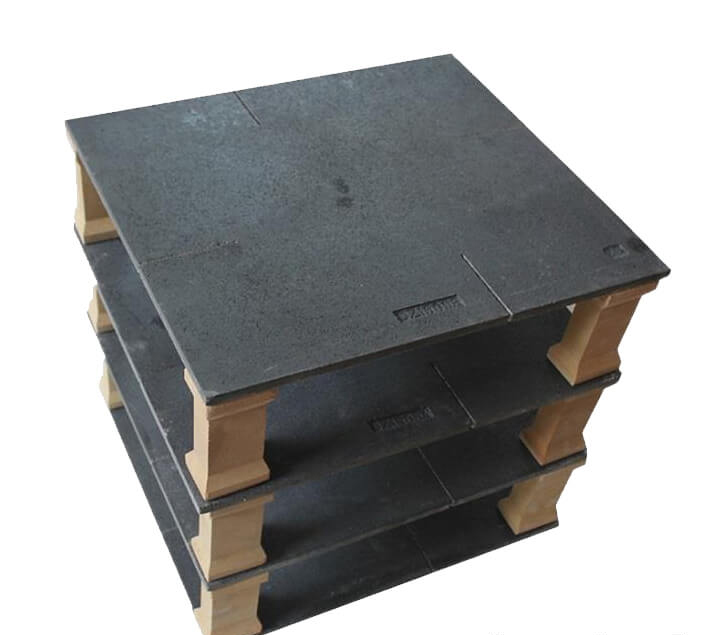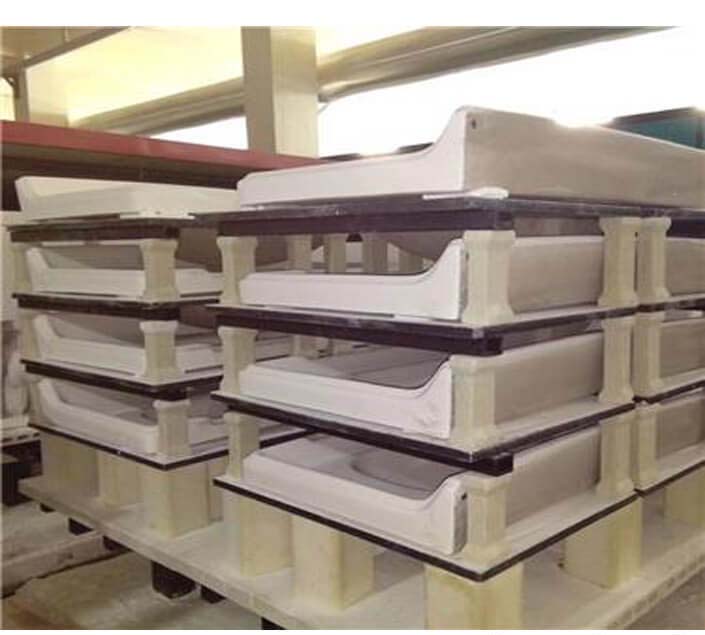Introduction Sic Refractory Plate
In the late 1970s and early 1980s, China began to develop SIC refractory plate and achieved certain results. Since 1998, our factory has researched and discussed the production process of silicon carbide slabs, and gained certain experience.
1.Raw material selection and processing
Many domestic and foreign manufacturers use black silicon carbide raw materials, which are cheap and have good oxidation resistance. The choice of silicon carbide particle size has a great influence on the oxidation resistance of the product. According to the research of Hunan University, the finer the raw material, the easier it is to be oxidized. The particle size of silicon carbide selected by our factory is as follows:
| Grain composition | Screen size | % | Screen size | % | Screen size | % | Screen size | % | Screen size | % |
| 16# | >12 | 0 | 12-16 | 20 | 16-18 | 50 | 20-24 | 78 | <24 | 4 |
| 24# | >16 | 0 | 16-24 | 20 | 21-30 | 50 | 30-36 | 76 | <36 | 4 |
| 80# | >60 | 0 | 60-80 | 25 | 80-100 | 45 | 100-120 | 73 | <120 | 4 |
| 150# | >80 | 0 | 80-150 | 15 | 150-180 | 35 | 180-240 | 65 | <280 | 4 |
2.Blank preparation
Since silicon carbide has the disadvantage of being easily oxidized, and considering the ability of the SIC refractory plate to have high thermal stress and bending resistance against thermal gradient, appropriately increasing the critical grain size of the silicon carbide plate can reduce its oxidation rate and improve its thermal stability.
3.Molding
The steel mold semi-dry forming process is applied to the high-tonnage hydraulic press and vibration forming machine, the forming pressure is required to be 600-800kgfcm2. In order to reduce the pressure transmission deviation during the pressing process,use volatile kerosene lubrication molds to reduce friction during molding,the density of the formed embryo body is required to reach 2.6g/cm3, the dimensional error of the product is required to be controlled within ±0.5%, and the flatness is required to be controlled within the range of 0.2-0.5%.
Characteristics Sic Refractory Plate
4.Drying and firing
The silicon carbide slab is dried by the introduced cyclone dryer to make the residual moisture of the embryo body reach 1%. The drying system of various embryo bodies is as follows:
| Thickness | 3-5cm | <3cm | >5cm |
| Drying temperature | 90-105 | 105 | Dry with cold air for 2-4 hours, then dry with hot air, temperature is 90-100 ° C |
| Drying time:hour | 8-12 | 4-8 | 12-16 |
5.Main technical data
The main technical data of the SIC refractory plate is as follows:
| Item | Unit | Data |
| Max. working temperature | ℃ | 1380 |
| Density | g/cm3 | ≥3.02 |
| Porosity | % | <0.1 |
| Bending strength | MPa | 250(20℃) |
| Bending strength | MPa | 280(1200℃) |
| Modulus of elasticity | GPa | 330(20℃) |
| Modulus of elasticity | GPa | 300(1200℃) |
| Thermal conductivity | W/m.k | 45(1200℃) |
| Coefficient of thermal expansion | K-1×10-6 | 4.5 |
| Rigidity | 13 | |
| Acid alkaline-proof | Excellent |
Practice has proved that the silicon carbide slabs combined with black silicon carbide and ceramic, using semi-dry molding process,its product performance can reached the foreign products performance index level , the kiln slab introduced in our factory have a good effect.
Technical Data Sheet of Sic Refractory Plate
| Item | Unit | Data |
| Max Working temperature | ℃ | 1380 |
| Density | g/cm³ | ≥3.02 |
| Porosity | % | <0.1% |
| Bending Strength | Mpa | 250(20℃) |
| Mpa | 280(1200℃) | |
| Modulus of elasticity | Gpa | 330(20℃) |
| Gpa | 300(1200℃) | |
| Thermal conductivity | W/m.k | 45(1200℃) |
| Coefficient of thermal expansion | K-1×10-6 | 4.5 |
| Rigidity | 13 | |
| Acid alkaline-proof | Excellent |
Related Products:
This post is also available in: Arabic French German Indonesian Italian Japanese Korean Portuguese (Portugal) Russian Spanish
















